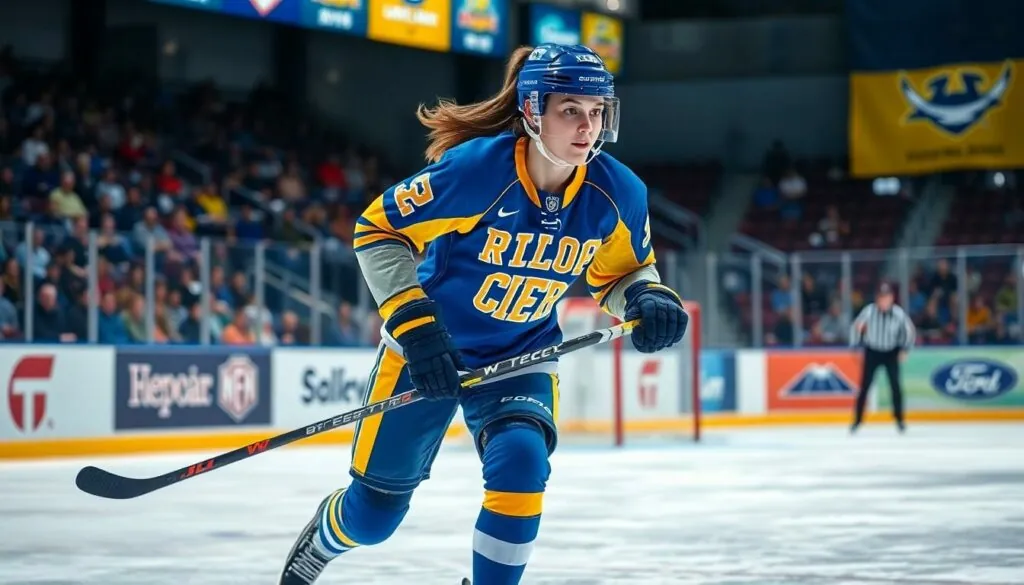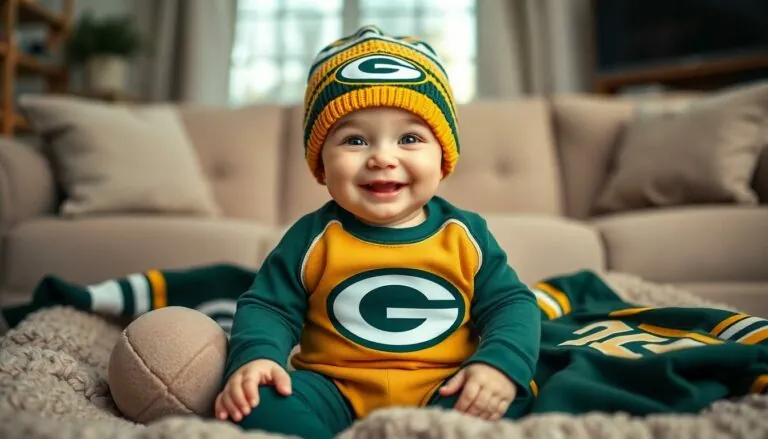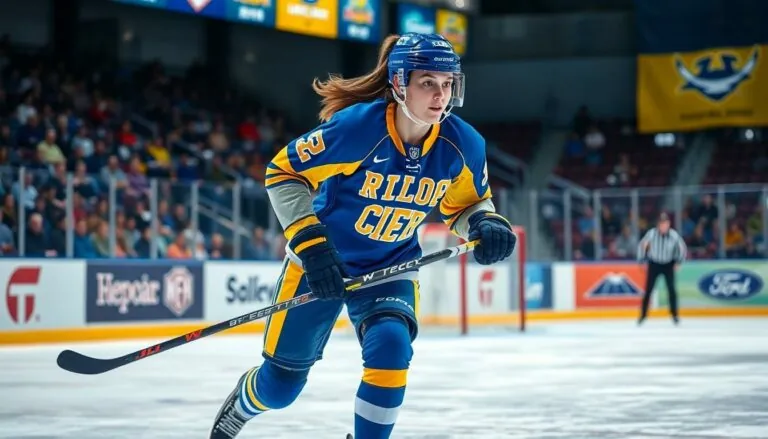Table of Contents
ToggleWomen’s college hockey is more than just a sport; it’s a thrilling display of skill, determination, and a whole lot of heart. With each slap shot and breakaway, these athletes prove that the ice isn’t just for the boys. From nail-biting rivalries to jaw-dropping saves, the excitement keeps fans on the edge of their seats.
Overview of Womens College Hockey
Women’s college hockey showcases exceptional talent and dedication, drawing attention from fans across the country. Each year, various collegiate teams compete in conferences, fighting for titles and national recognition. Numerous universities field elite programs, contributing to the growing popularity of the sport.
Skill development plays a crucial role in women’s hockey, with dedicated training regimens that enhance players’ abilities on the ice. Teams often prioritize recruiting talented athletes from high school programs and junior leagues, building strong rosters. Commitment to teamwork fosters on-ice chemistry, making each game an exciting display of strategy and execution.
Competitions typically occur from October to March, leading to national tournaments like the NCAA Championship. This tournament serves as a pinnacle event, showcasing the best teams and athletes in women’s college hockey. The atmosphere at these matches remains electric, with passionate fans and supportive alumni cheering for their teams.
Statistics highlight the increasing participation rates among female athletes in hockey. For instance, the number of female NCAA hockey players has steadily risen over the past two decades, underscoring the sport’s growth. Active engagement in women’s college hockey now encourages young girls to pursue their dreams on the ice, paving the way for future generations of talented players.
Overall, women’s college hockey epitomizes hard work, resilience, and passion. Athletes strive for excellence, inspiring fans while proving that women’s hockey deserves equal recognition and respect. Through intense rivalries and impressive performances, women’s college hockey continues to solidify its place in the sports landscape.
Historical Development
Women’s college hockey has undergone significant changes since its inception, evolving into a respected and competitive sport. The growth over the years showcases the dedication and hard work of female athletes.
Early Beginnings
Early participation in women’s hockey began in the 1960s, with regional tournaments and club teams. Colleges started to recognize the sport’s potential, leading to the formation of organized leagues in the 1970s. The Association for Intercollegiate Athletics for Women played a vital role in establishing competitive frameworks. Initial challenges included limited resources and recognition, but athletes persevered, laying the groundwork for future developments.
Growth and Recognition
The 1990s marked pivotal growth for women’s college hockey, highlighted by the NCAA adopting the sport in 1982. Increasing numbers of colleges offered programs, expanding to over 40 teams. National championships attracted attention, showcasing talent and inspiring younger generations. Media coverage improved, providing athletes with platforms to share their stories. The popularity of women’s hockey surged, attracting sponsors and enhancing recruitment opportunities. Participation rates rose steadily, indicating a promising future for female hockey players.
Key Conferences and Teams
Women’s college hockey features several prominent conferences, each showcasing talented programs. These conferences contribute significantly to the sport’s competitive landscape, fostering rivalries and exciting matchups throughout the season.
Major Conferences
The NCAA oversees women’s hockey, with key conferences including ECAC Hockey, WCHA, and Hockey East. ECAC Hockey consists of schools like Harvard and Cornell, known for their strong performances. WCHA includes top teams such as Minnesota and Wisconsin, making it one of the most competitive leagues. Hockey East features programs like Boston College and Northeastern that consistently challenge for championships. Each conference plays an essential role in developing talent and enhancing the overall quality of women’s hockey.
Notable Programs
Several notable programs have emerged as powerhouses in women’s college hockey. Minnesota consistently ranks among the top teams, having secured multiple national titles. Wisconsin also boasts a rich tradition, contributing significantly to the sport’s growth. Boston College and Northeastern eagerly participate in the race for conference and national titles. Teams like Providence and Quinnipiac bring a competitive spirit, creating thrilling matchups. These programs not only excel on the ice but also inspire a new generation of female athletes.
Impact on Female Athletes
Women’s college hockey significantly influences female athletes, providing valuable opportunities and fostering skill development.
Opportunities and Scholarships
Athletes participate in an expanding number of college programs that award scholarships. Approximately 90 NCAA institutions provide opportunities tailored to female hockey players. Scholarships offer financial aid, facilitating access to education while pursuing athletic excellence. Recognition of women’s hockey continues to grow, reflecting increased investment from colleges in promoting female athletics. Career prospects also arise through networking and exposure at national events. These pathways encourage young women to excel on and off the ice, contributing to their personal and professional development.
Skill Development and Training
Training programs emphasize skills essential for success in competitive environments. Female athletes engage in rigorous practice schedules, honing techniques and teamwork. Facilities specifically designed for women enhance training experiences. Coaches focus on building game strategy, physical conditioning, and mental toughness. Increased emphasis on sport-specific training leads to improved player performance. Participating in tournaments and competitions showcases acquired skills while fostering camaraderie among athletes. These training opportunities play a crucial role in shaping confident, capable female players ready to compete at higher levels.
Challenges Facing Womens College Hockey
Challenges persist in women’s college hockey, affecting its growth and visibility. These obstacles include funding limitations and insufficient media coverage.
Funding and Resources
Funding issues impede many women’s college hockey programs. Budget constraints often lead to fewer scholarships and limited access to quality training facilities. Athletic departments allocate resources unevenly, prioritizing men’s sports. As a result, some teams face obstacles in recruiting top talent. Teams in major conferences like WCHA encounter comparatively better funding than those in smaller leagues.
Media Coverage and Exposure
Media coverage represents another significant challenge. Women’s college hockey receives less attention than men’s hockey, affecting its overall visibility. Networks prioritize men’s games, limiting opportunities for women athletes to showcase their skills. As a consequence, younger players might struggle to find role models within the sport. Increased media exposure could lead to greater fan engagement and sponsorship opportunities. Enhanced narratives about female athletes can inspire young girls to participate, contributing to the sport’s growth.
Conclusion
Women’s college hockey stands as a testament to the dedication and talent of female athletes. As the sport continues to grow in popularity and recognition, it inspires a new generation of players eager to make their mark. The competitive spirit and intense rivalries showcase the incredible skill level present in the game.
Despite the challenges of funding and media visibility, the future looks bright for women’s hockey. With increasing opportunities for scholarships and a push for greater exposure, the sport is poised for continued growth. As more fans engage with women’s college hockey, it will undoubtedly earn the respect and recognition it deserves in the athletic community.







